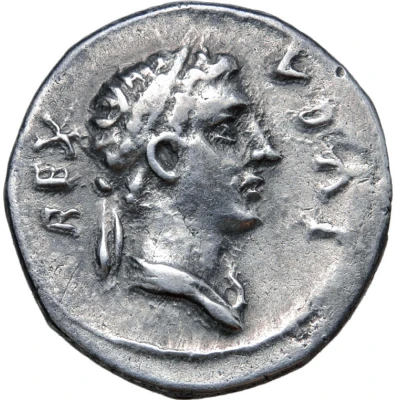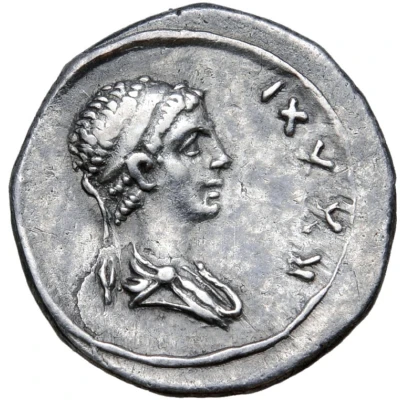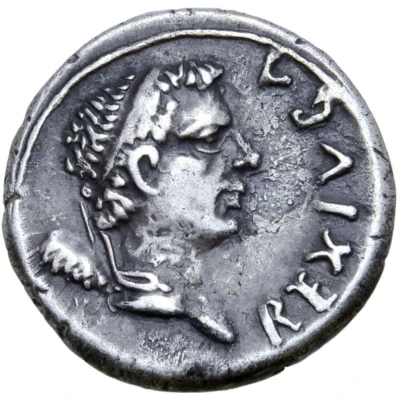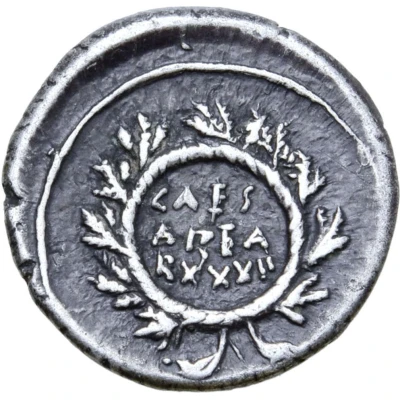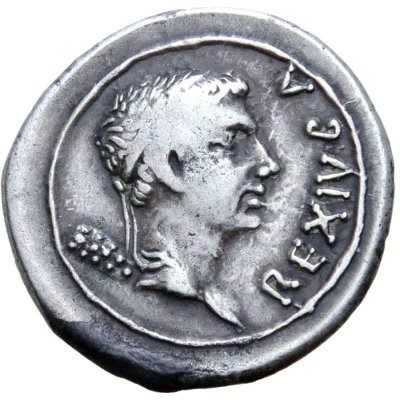
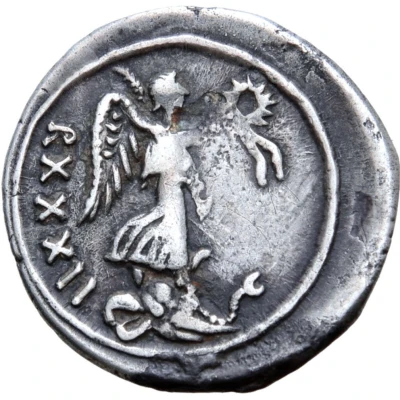

© Roma Numismatics Limited
Denarius - Juba II Caesarea
32 (7) year| Silver | 3.03 g | 19 mm |
| Issuer | Mauretania |
|---|---|
| King | Juba II (25 BC - 23 AD) |
| Type | Standard circulation coin |
| Year | 32 (7) |
| Calendar | Mauretania - Juba II era |
| Value | 1 Denarius |
| Currency | Denarius (25BC-40AD) |
| Composition | Silver |
| Weight | 3.03 g |
| Diameter | 19 mm |
| Shape | Round (irregular) |
| Technique | Hammered |
| Orientation | Variable alignment ↺ |
| Demonetized | Yes |
| Updated | 2024-10-10 |
| Numista | N#379553 |
|---|---|
| Rarity index | 100% |
Reverse
Victory (Nike) standing to right on elephant head, holding wreath and palm; R XXXII behind.
Script: Latin
Lettering: R XXXII
Comment
Mazard ascribes this type to commemorations following a victory by Juba's forces over the Gaetuli tribes in AD 6/7.The Banasa Hoard, deposited in circa AD 18-17 was found in 1907 near modern day Souk-el Arbaa, 120 km northeast of Rabat, Morocco, in 1907. The hoard was previously said to be from Alkazar (El Ksar El Kebir), 70 km south of Tangier and hence is occasionally referred to as the El Ksar Hoard. The group contained approximately 4000 silver coins and one bronze. A substantial number of the coins now reside in public collections, principally in London, Paris, Berlin, Athens, New York and Algiers.
Interesting fact
One interesting fact about the Denarius - Juba II (Caesarea) 32 (7) coin is that it features a unique blend of Roman and Mauritanian design elements. The obverse side of the coin bears the image of Juba II, the king of Mauretania, while the reverse side features a traditional Roman design of a goddess standing on a prow, symbolizing the Roman Empire's dominance over the region. This blending of styles reflects the complex cultural exchange that occurred during the Roman Empire's expansion into North Africa.
